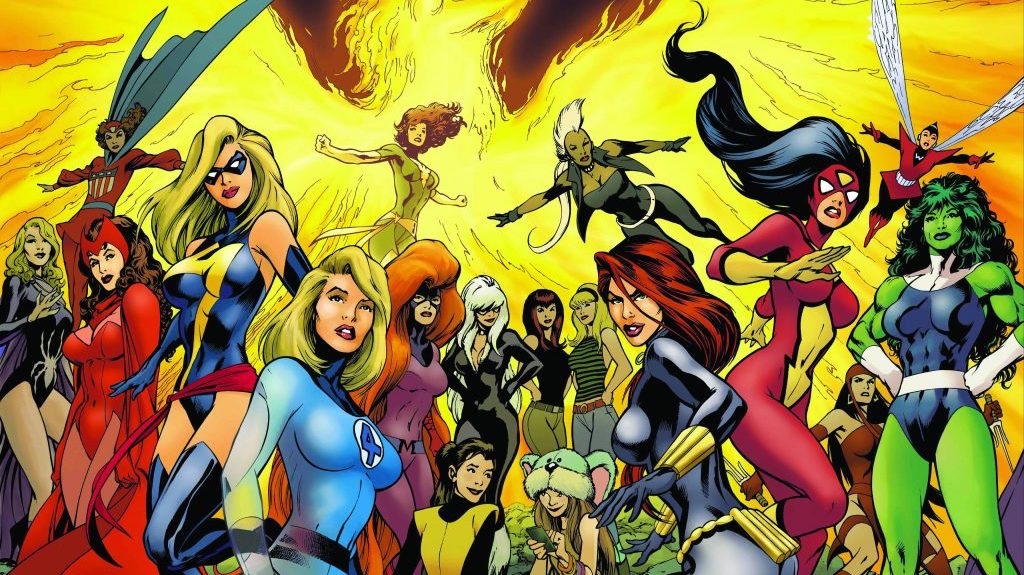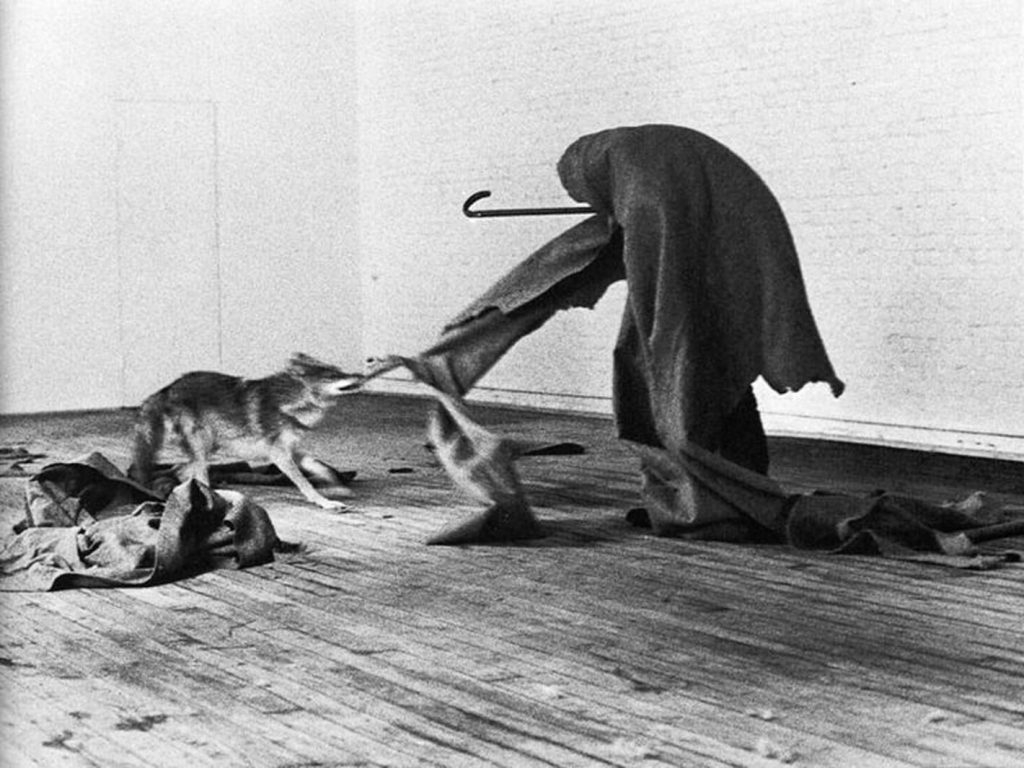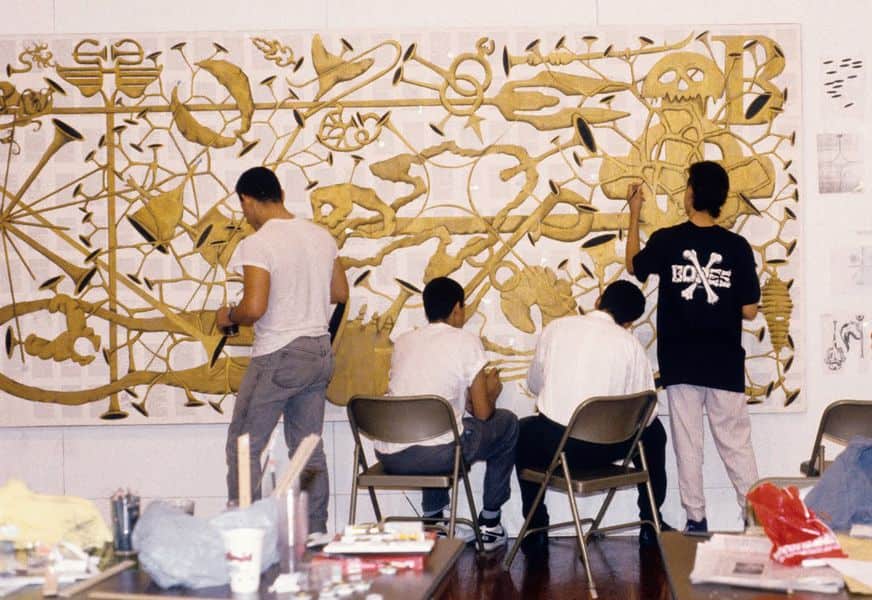It was immediately clear that the exhibition that took place last year in Rome (1 june – 13 July 2020) came from the USA: the white walls of Palazzo Merulana, the core of Esquilino district, were animated by a triumph of multicultural superheroines: a series of ninety boards and blow-ups by 22 female artists who, in their personal way, contributed to women’s self-determination in the north-american comics world, starting from the vintage comics of the Fifties and the Psychedelic style of the Seventies. Just to mention some of them: Afua Richardson and Alitha Martinez, afro american activists, winners of the Eisner Award for their World of Wakanda (Marvel); Colleen Doran, or Emil Ferris, whose comic My Favourite thing are Monsters, (published in Italy by Bao Publishing became a true critical and popular success) was nominated Best Comics of the Year in 2018.
“It’s an exhibition displaying three generations of female authors who changed not only the way of working in this industry, but also its perception in the eye of the readers, of the critics and of the public” cleared Luca Piccoli, curator of the italian action with ARD! Festival and Comicon.

It’s not a coincidence that the exhibition, designed in New York and hosted exclusively in Europe, in the Italian capital, on suggestion of the USA embassy, has been curated by two legends of the american comics scene: Kim Munson, art critic, and Trina Robbins, activist and militant, class of 1939, known mostly as the creator of Wonder Woman, realized for DC Comics. Robbins’ contribution, on the subject gender issues, was that of helping the demolition of the stereotyped narration of the woman as princess that needs to be saved, proposing an alternative feminin model: proud and independent, capable herself of rescuing others – even superheroes.
“I started my research on cartoonist women because all men said that there never had been women drawing comics, and I knew it wasn’t true. The fact is that what isn’t written gets lost and all those talented women had been forgotten because all the men that wrote comics’s history was interested in writing and researching about them”
The cartoonist defined it as a great “gap to be filled”; Robbins still fights, despite her age, for a right female representation in the artistic field in general, protesting every time, in great museum’s captions, she can’t find names and biographies of the female protagonists. Besides, her “Wonder Woman”, who isn’t a real woman but a product of the cartoonist imagination, has been victim of many interpretative upheavals and body strumentalisation, some times represented with breasts that seemed to be growing as her signature red costume reduced.
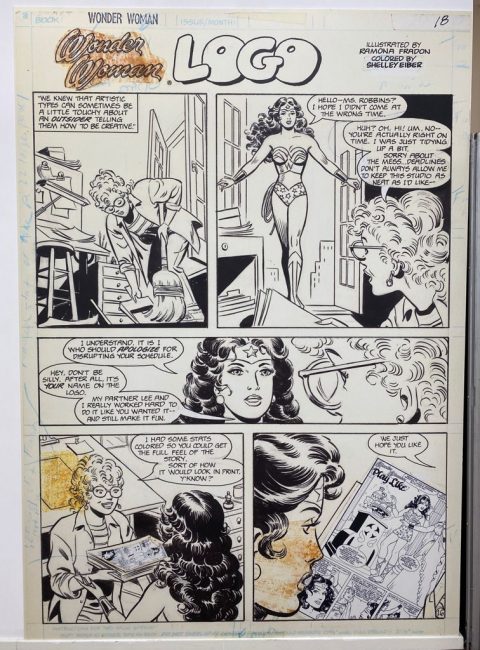
The exhibition included the projection of the documentary She makes comics that is “…the never told story told by women in the comics industry” by Marisa Slotter: containing interviews of some of the graphic novel protagonists, it was presented for the first time in Italy in continuous cycle. Each of these women contributed to make great strides towards a proper feminine representation in the publishing field that, just as many others, revealed itself to have a strong masculine and male-dominated inclination.
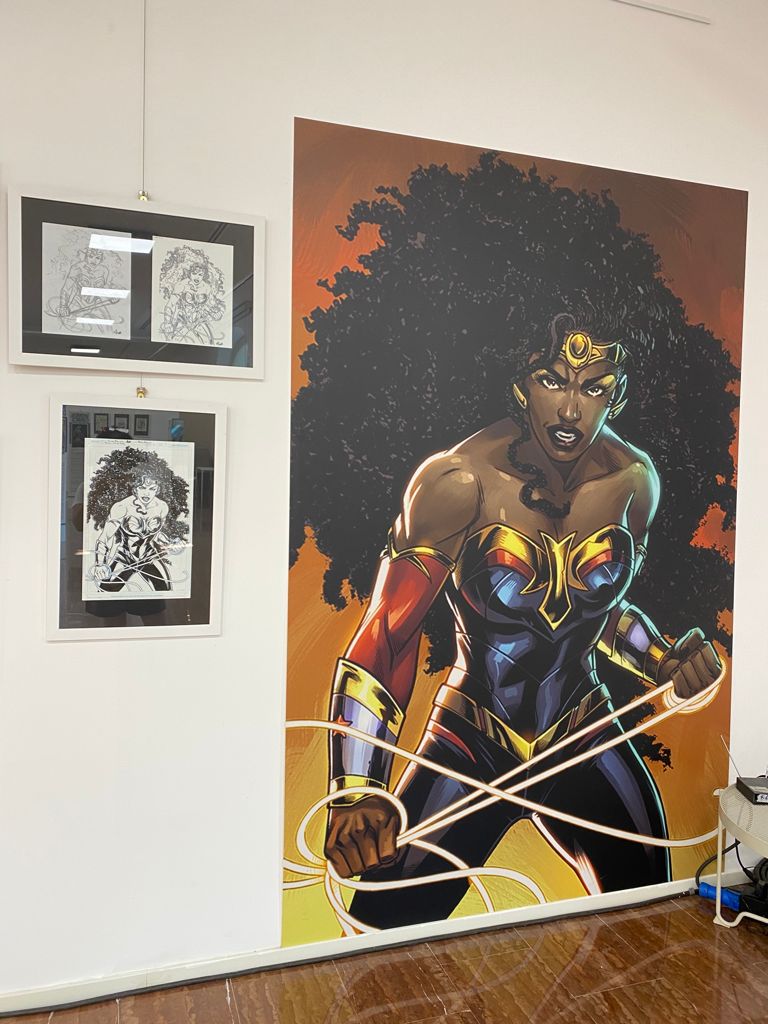
A series of four streaming meetings on Facebook and Zoom, platforms that we learned to consider as an indispensable asset in this last period of restriction, gave a true added value to the exhibition: thanks to their ability of creating a direct dialogue and real contact with a remote public, helping the process of confrontation on extremely topical issues between, in this case, the overseas protagonists and the italian colleagues (for example Rita Petruccioli or Fumettibrutti). the themes of discussion were super actual: feminist movements and militant art, female body and its representation, anti-racism and intersectionality. All these themes were treated with the appropriate sensitivity and this approach allowed to include the coloured boards exposed or the live-sized cardboards as a starting point to boost a wider reflection on the social achievements of the last decades.
Since the Fifties the american underground autoproduction by pioneristic figures as Robbins opened the road to a second generation of women that, thanks to the achievements made by the previous, carried on in their day to day routines the fight against the “comics are not for girls” prejudice and for the recognition of a professional dignity that equal to that of their male colleagues. More and more women of the past generation decided to get out of the nerd production to face the competitive editorial market. As a matter of fact, today they are considered a model and inspiration for other young adolescents that shyly knock on the door of the big publishing companies hoping to see one day the release of the graphic novels, shaped in their bedrooms.
This doesn’t happen often, but sometimes it does, for detailed and precious works, inner worlds expressed with a variety of graphic signs and stylistic choices that, in the most outstanding cases, also result in great European successes. It’s worth mentioning the world-famous masterpiece by the french Mirion Malle, (finally) landed in Italy thanks to the translation by L’orma editore: Commando culotte, as thick as a sociology paper but with the freshness of comics, takes on an analysis on the unsuspectable gender stereotype found in some of the most famous tv series (Game of Thrones, School of Rock, American Pie), Disney cartoons and american movies. The reading this kind of comics can be illuminating and contributing to modify, silently and unconsciously, the approach of the reader to its themes.
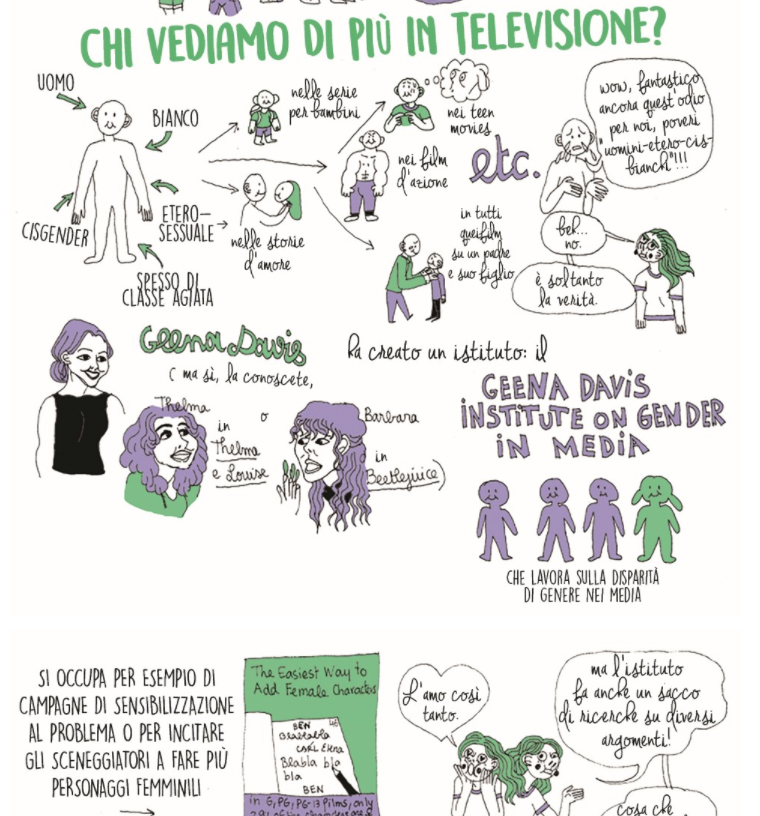
The event in Rome wasn’t merely an original exhibition as many others, but an actual press review of the social achievements, collected with effort, also with the contribution of comics written by women and based on female characters. Before being an interesting moment of leisure for curious by-passers around the Basilica of Laternato or for students looking for study halls on the Palazzo’s ground floor, Women in comics was a smart and rare symbolic experience in the context of a variety of cultural suggestion driven eminently by commercial purposes, those ‘Blockbuster Exhibitions’, as labeled by Tomaso Montanari in his against Exhibitions of 2017. The art historian some years ago was committed to analyze the contemporary phenomenon consisting in the tendency, for Italy’s institutions or great museums, to overlook the original content and presentation of their initiatives to concentrate only on the image and financial return that can be gained from them. Initiatives aimed at the amusement and entertainment of the visitors, not necessarily experts of the subject, where nothing or very little can be learned and that rarely leave something of education or emotion, are more and frequent. For Women in comics, on the contrary, the underlying idea was found strong, winning and bold, and it enabled the spectator to better comprehend the atmosphere in which the previous generation of women in comics broke through, paving the way for the contemporary ones.


